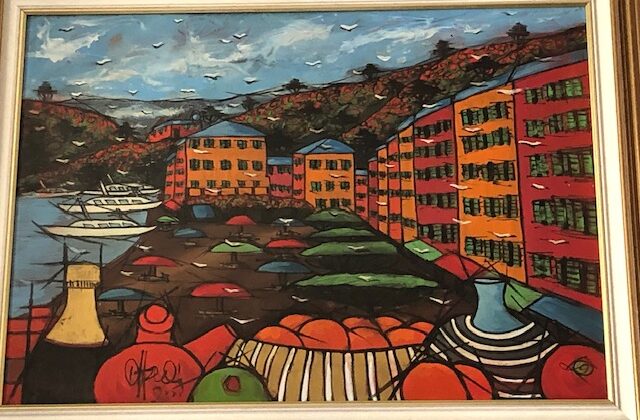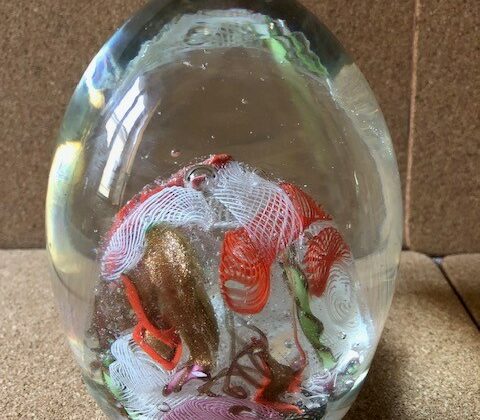Giorgio Morandi: the eye of one who sees but does not understand
By Francesco Carelli – Professor University of Milan and Rome
The exhibition Giorgio Morandi: Lines of Poetry on view at the Estorick Collection of Modern Italian Art, is a career-spanning exhibition of around eighty meditative and intimate prints, paintings and drawings by the master of poetic understatement, Giorgio Morandi (1890-1964).
One of the Estorick Collection’s most popular artists, Morandi is often presented as a somewhat reclusive figure whose works embody ‘eternal’ and ‘timeless’ artistic values, transcending the mercurial languages of modernism through their masterly compositional balance, subtle tonal range and exquisite luminosity. However, the fact that Morandi passed through the ranks of F. T. Marinetti’s Futurist movement, exhibited alongside Novecento artists such as Mario Sironi and was affiliated with Giorgio de Chirico’s Scuola metafisica, reveals him to have been a far more complex and multi-layered figure than might be supposed on first acquaintance with his ostensibly uncomplicated still lifes and landscapes. As de Chirico noted, Morandi was a master of uncovering the ‘metaphysical dimensions of the commonest objects’, that is, of discerning the poetry within ‘those things that habit has rendered so familiar to us that we […] often look upon them with the eye of one who sees but does not understand.’
Organised in collaboration with Bologna’s Galleria d’Arte Maggiore, and with loans from a number of private collections as well as from the Estorick Collection, Lines of Poetry focuses on works on paper, including a large section devoted to the artist’s etchings. Entirely self-taught as a printmaker, Morandi began to produce etchings in 1912 and quickly mastered the technique, coming to consider it an important vehicle for artistic expression, and going on to hold the Chair in Printmaking at Bologna’s Accademia di Belle Arti for over twenty years. Although restricted in terms of subject matter, these works reveal the artist’s great stylistic versatility and thirst for experimentation through their different formats and incorporation of a wide range of mark-making processes. For example, the exhibition includes a jazzy work from Morandi’s fleeting Futurist phase, in which his famous bottles and pitchers appear to jostle for elbow room on a shallow desktop, energised by dynamic contours and vigorous, multi-directional shading. Other images explore effects that seem to allude to Gestalt theories concerning the instability of perception, focusing as much attention on the spaces between objects as on the objects themselves. Morandi’s works frequently exploit the creative nature of perception, providing the viewer with the most minimal visual data necessary for constructing the image and comprehending the spatial relationships between the objects depicted. Others are simply exquisitely-rendered naturalistic images built up with the finest and most subtle use of cross-hatching .
Also included in the show are a number of watercolours, works that are rarely seen in the United Kingdom, and which therefore make this exhibition a truly unmissable occasion for any admirer of Morandi. Perhaps more than any others, these works exemplify the artist’s peculiar ability to distil the essence of a complex scene or composition into an arrangement of near-abstract forms. Captivating in their restraint and extraordinary economy of means, these images are nevertheless intensely evocative of time and place.
This extensive selection is complemented by drawings by Morandi from the Estorick Collection, making this exhibition one of the most comprehensive overviews of his graphic art ever mounted outside Italy.
Giorgio Morandi (1890-1964)
Morandi studied at the Accademia di Belle Arti in Bologna, receiving his diploma in 1913. He studied the works of Paolo Uccello, Giotto and Masaccio in Florence and collected black and white reproductions of paintings he could not see at first hand, particularly those by Cézanne, Derain and Henri Rousseau. In 1912 he began to teach himself to etch, using old manuals, and the medium continued to be important to him throughout his career. Morandi exhibited with the Futurists in 1914, but was never influenced by their aesthetics or interested in their cultural agenda. The Metaphysical works of de Chirico and Carrà inspired him to create a small number of still lifes with groupings of enigmatic objects, but by 1919 he had abandoned such compositions to pursue more formal qualities in his still lifes. Morandi participated in the Novecento exhibitions of 1926 and 1929, but his work had greater affinity with the Strapaese movement, which was inspired by provincial cultural traditions. Morandi did not visit Paris until 1956 but was always well-informed about the cultural debates of his age. From 1930 until 1956 he held the Chair in Printmaking at the Accademia di Belle Arti in Bologna, but continued to paint until his death.




